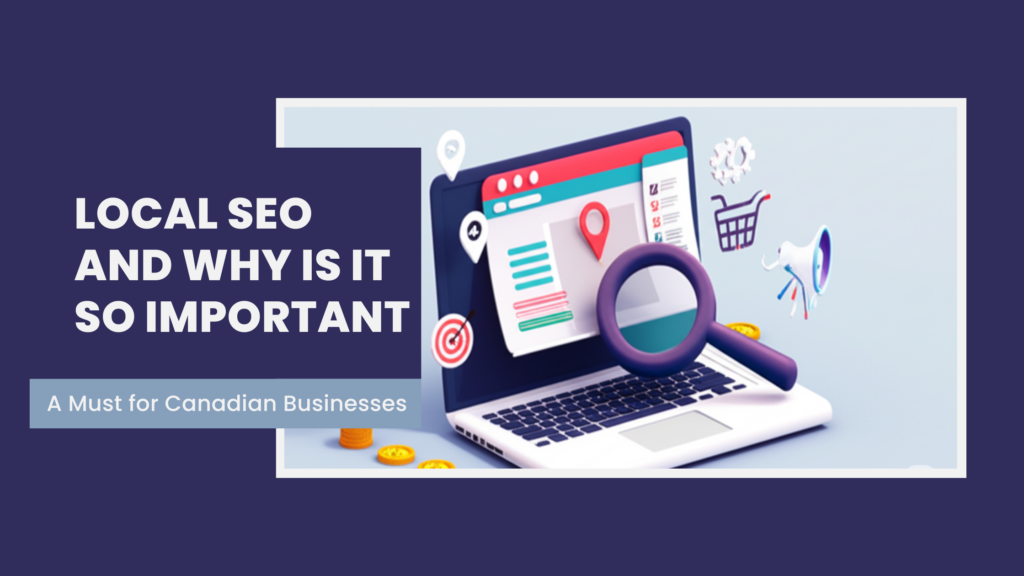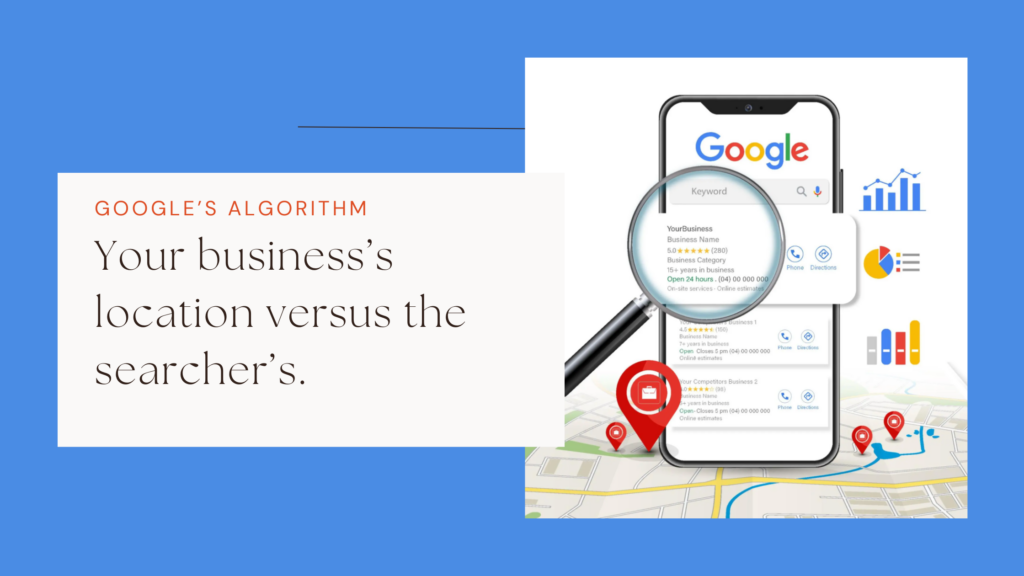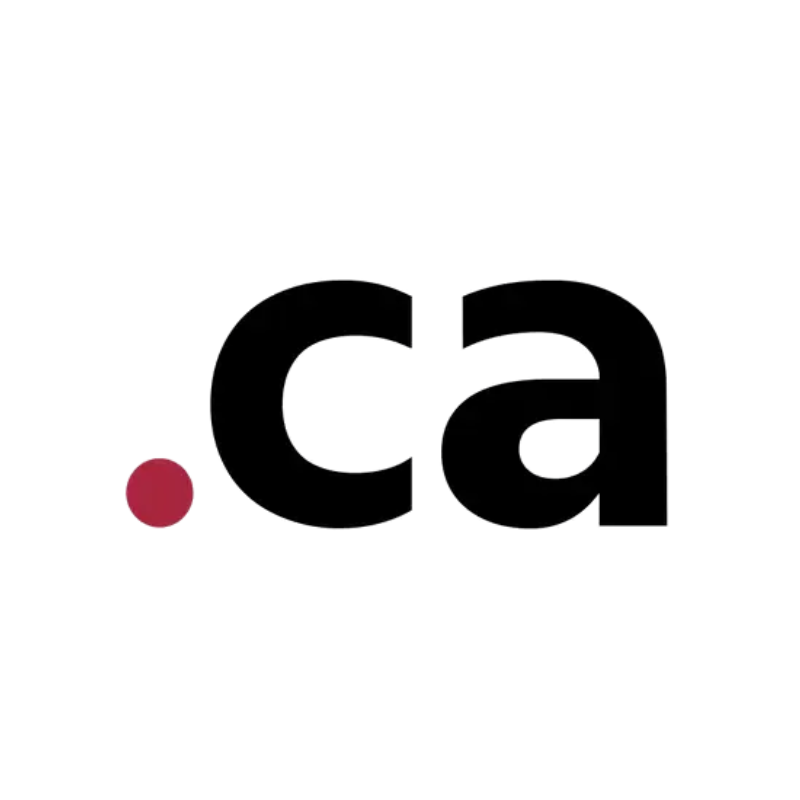Many Canadian businesses struggle to get their business noticed online. The solution to that is Local SEO in Canada.
It helps local customers find you when they search for services like “coffee shop near me” or “plumber in Toronto” on Google.
The challenge is that local SEO can seem tricky. Google’s rules keep changing, AI is shaking things up, and you might feel lost in the digital noise.
But don’t worry because this guide breaks it down into simple, actionable steps for small and medium Canadian businesses.
You’ll learn how to stand out in 2025 without needing a tech degree.
Here’s what you’ll get in this guide:
- A clear explanation of what local SEO is and why it’s critical for your business
- Step-by-step tips to optimize your website, Google profile, and local listings
- Easy ways to get customer reviews, create local content, and track your progress
- How a .ca domain from Truehost Canada boosts your local rankings
Let’s make your business the first one locals see when they search!
What is Local SEO and Why is it So Important?

Local SEO is all about helping your business show up in search results when people look for nearby services.
If a customer in Calgary searches “best pizza near me.” Local SEO makes sure your pizzeria appears in Google’s results, complete with a map and your phone number.
Why It’s a Must for Canadian Businesses
Local SEO drives real results. Studies show 80% of people who search for local businesses visit or buy within 24 hours. For small businesses in Canada, this is a game-changer. You can compete with big brands without a huge budget.
Canada-Specific Advantages
- Builds trust: Canadians love supporting local businesses, especially in their city or province.
- Bilingual searches: In Quebec, optimizing for French terms like “meilleur café Montréal” reaches more customers.
- Mobile surge: Over 60% of searches in Canada happen on smartphones, often for “near me” services.
- 2025 trends: AI-powered search and voice assistants like Siri are making local seo canada more important than ever.
Real-World Impact
Think of a hair salon. Without local SEO, no one will ever get to know about it.
With Local SEO, the salon ranks high when locals search “haircut near me,” bringing in new clients daily.
What’s the Difference Between Local SEO and Standard SEO?
Local SEO focuses on nearby customers, while standard SEO targets broader audiences. Here’s a clear breakdown:
| Feature | Local SEO | Standard SEO |
| Goal | Attract customers in a specific area | Reach global or niche audiences |
| Keywords | “Local seo canada,” “dentist Ottawa” | “Dental care tips,” “best toothbrush” |
| Key Factors | Proximity, reviews, local listings | Content depth, backlinks, site authority |
| Best For | Physical stores, restaurants, services | Online stores, blogs, global brands |
When to Choose Local SEO
If you have a physical location like a coffee shop in Regina, local SEO is your focus.
It ensures you rank for searches tied to your area. If you sell digital products worldwide, standard SEO is better.
Why It Matters for Canada
For local seo canada, tools like Google Business Profile and a .ca domain from Truehost Canada signal you’re local, giving you an edge in local rankings.
How Does Local SEO Work?
Local SEO relies on three core pillars:
- Relevance: Does your business offer what the searcher needs? For example, a “plumber” search matches a plumbing service.
- Distance: How close is your business to the searcher? Google prioritizes nearby options.
- Prominence: Are you well-known? Reviews, citations, and a strong online presence boost this.
Google’s Local Pack
When you search “bakery near me,” Google shows a map with three businesses in the “local pack.”
These spots are the best for driving traffic. A .ca domain tells Google you’re a trusted Canadian business, improving your chances of landing there.
An Example
A Vancouver florist with a .ca domain, consistent address, and 50 positive reviews ranks higher than a competitor with a .com and fewer reviews. It’s all about clear signals to Google.
What is “the Algorithm” and How Does it Affect Local SEO?

Google’s algorithm decides who appears in local search results. It’s like a recipe, mixing factors to pick the best businesses for local seo canada.
Key Factors
- Proximity: Your business’s location versus the searcher’s.
- Reviews: More 4- and 5-star reviews push you up.
- NAP Consistency: Your name, address, and phone number must match everywhere online.
What’s New in 2025
- AI-powered search: Google better understands phrases like “best sushi near me.”
- Mobile-first indexing: Your website must load fast on phones—60% of Canadian searches are mobile.
- E-E-A-T (Experience, Expertise, Authority, Trust): Google rewards businesses with strong reputations and clear expertise.
Mistakes to Avoid
- Inconsistent NAP: “123 Main St.” on Google but “123 Main Street” on Yelp confuses Google.
- Slow websites: A laggy site loses mobile users.
- Ignoring reviews: Few or no reviews signal low prominence.
How do I Conduct Keyword Research for Local SEO?
Keyword research helps you find what customers search for. Here’s how to do it for local seo canada:
- Use Free Tools
Start with Google Keyword Planner. Type “local seo canada” or “barber Toronto” to see search volumes and related terms. - Add Local Modifiers
Include cities or provinces. Examples: “local seo canada Calgary” or “dentist Halifax.” In Quebec, add French terms like “coiffeur Québec.” - Spy on Competitors
Look at top-ranking local businesses. Tools like Ahrefs or SEMrush (paid) show their keywords. See what works for a competitor in your city. - Focus on Search Intent
Target phrases customers use when ready to buy, like “best plumber near me” or “coffee shop open now.” Avoid vague terms like “plumbing.” - Track 5–10 Keywords
Pick high-value keywords with decent search volume. For a Vancouver spa, try “spa Vancouver,” “massage near me,” and “local seo canada spa.”
Tools to Try
- Free: Google Keyword Planner, Google Trends
- Paid: SEMrush, Ahrefs
- Tip: Use Google Autocomplete for ideas. Type “local seo canada” and see suggestions like “local seo canada Toronto.”
How do I Optimize My Website for Local Search?
Your website is your digital storefront. Make it shine for local seo canada with these steps:
- Add Local Keywords: Put “local seo canada” or “Edmonton bakery” in your homepage title, meta description, and headers. Keep it natural.
- Speed Up Your Site: Use Google PageSpeed Insights to test load time. Aim for under 3 seconds. Compress images and avoid heavy plugins.
- Make It Mobile-Friendly: Most local searches happen on phones. Use a responsive design that adjusts to any screen size.
- Use a .ca Domain: A .ca domain from Truehost Canada signals you’re Canadian, boosting local trust and rankings.
Common Mistakes
- Keyword stuffing: Don’t repeat “local seo canada” unnaturally—it hurts readability.
- Slow loading: Large images slow your site. Use tools like TinyPNG to compress them.
- Non-mobile sites: Test your site on a phone. If it’s hard to navigate, fix it.
Example: A Toronto gym with a .ca domain and “Toronto fitness classes” in its title tag ranks higher than a .com competitor.
Build a Strong Online Presence Through Local Directories and Citations

Citations are online mentions of your business’s name, address, and phone number (NAP). They’re essential for local seo canada.
Top Canadian Directories
- Google Business Profile
- Yelp Canada
- Yellow Pages Canada
- Better Business Bureau Canada
- Canadian Business Listings
Why NAP Consistency Matters
If your address is “123 Main St.” on Google but “123 Main Street” on Yelp, Google might think you’re two different businesses. This tanks your rankings.
How to Get It Right
- Use Moz Local or BrightLocal to audit your citations.
- Fix errors like typos or outdated phone numbers.
- Check every 3 months to catch new issues.
- Add your business to niche directories, like “Restaurants Canada” for a Vancouver eatery.
Create High-Quality Content for Local SEO
Great content attracts local customers and boosts local seo canada. Here’s how to do it:
- Write Local Blogs: Create posts about community topics. Examples: “Best Hiking Trails in Banff” for an outdoor store or “Winter Festivals in Winnipeg” for a café.
- Use Keywords Naturally: Include “local seo canada” or “Ottawa dentist” in your text, but don’t force it.
- Add Photos and Videos: Use images of your business or local events. Add alt text like “Kelowna winery event.”
- Post Regularly: Aim for one blog post a month to stay fresh in Google’s eyes.
Hyperlocal Content Ideas
- A guide to “Toronto’s Best Dog Parks” for a pet store
- A French post for Quebec, like “Meilleurs restaurants à Québec”
- A “Calgary Stampede Tips” post for a local retailer
Optimization Tips
- Use short paragraphs (1–3 sentences).
- Add headers with local keywords.
- Share posts on social media for extra reach.
We at Truehost Canada help businesses create SEO-friendly content with our fast hosting and .ca domains. Check it out at the Truehost Canada website.
Encourage Customer Reviews and Manage Your Online Reputation
Reviews are crucial for local seo canada. They build trust and improve your rankings.
How to Get Reviews
- Ask Politely: After a sale, email customers: “Loved our service? Leave a Google review!”
- Make It Easy: Share direct links to Google or Yelp Canada.
- Use QR Codes: Place them in-store for quick reviews.
- Follow Up: A gentle reminder a week later boosts responses.
Managing Your Reputation
- Thank positive reviewers to show appreciation.
- Respond to negative reviews calmly. Example: “We’re sorry about your experience. Contact us to make it right.”
- Monitor Google, Yelp, and Facebook weekly.
Canadian Legal Note
In Canada, offering rewards for reviews must follow anti-spam laws (CASL). Be transparent and avoid pressure tactics.
Example: A Montreal bakery with 50 Google reviews ranks higher than a competitor with 10.
Analyze and Track Your Local SEO Performance
You can’t improve what you don’t measure. Track your local SEO Canada efforts with these tools:
- Google Analytics: See how many visitors come from local searches.
- Google Search Console: Check rankings for keywords like “local seo canada” or “Vancouver plumber.”
- BrightLocal: Track your position in Google’s local pack.
Key Metrics to Watch
- Local keyword rankings
- Website traffic from “near me” searches
- Click-through rates on your Google Business Profile
- Conversion rates (e.g., calls or form submissions)
How to Use the Data
- Review monthly to spot trends.
- If rankings drop, check NAP consistency or add new content.
- Set goals, like ranking in the top 3 for “local seo canada Calgary.”
Pro Tip: Use Google Analytics’ “Location” report to see which Canadian cities drive traffic.
Register Your .CA
A .ca domain is a must for local seo canada. It’s like a digital Canadian flag for your business.
Why It Helps
- Builds trust: Canadians trust .ca domains over .com for local businesses.
- Boosts rankings: Google prioritizes .ca for Canadian searches.
- Strengthens branding: “YourBusiness.ca” looks professional and memorable.
How to Register
We at Truehost Canada make it simple:
- Visit our domain registration page.
- Search for your ideal .ca domain (e.g., “TorontoBakes.ca”).
- Pair it with our SEO-friendly hosting for faster site speed.
Why Truehost?
Our team at Truehost Canada offers affordable .ca domains and hosting optimized for local SEO. You get a domain that screams “local” and a site that loads fast.
Step-by-Step Guide for Local SEO in 2025
Here’s your 11-step plan to dominate local seo canada in 2025:
1) Claim and Optimize Your Google Business Profile
Your profile is your local SEO foundation.
- Verify your business on Google (takes 5–10 minutes).
- Add high-quality photos of your store, products, or team.
- Update hours, services, and categories (e.g., “Restaurant” or “Plumber”).
- Post weekly updates, like “New fall menu at our Ottawa café!”
2) Do Local Keyword Research That Reflects Customer Intent
Find what locals search for.
- Use Google Keyword Planner for terms like “local seo canada Toronto.”
- Check competitors’ keywords with SEMrush or Ahrefs.
- Target high-intent phrases like “best dentist near me” or “open now.”
- Include French terms in Quebec, like “avocat Montréal.”
3) Maintain NAP Consistency Across All Platforms
Consistency builds Google’s trust.
- Audit your NAP with Moz Local or BrightLocal.
- Fix errors on Google, Yelp, and Yellow Pages Canada.
- Check every 3 months to catch new issues.
- Use the exact same NAP format everywhere (e.g., “123 Main St.” not “123 Main Street”).
Mistake to Avoid: Typos or outdated phone numbers hurt rankings.
4) Add Local Business Schema Markup
Schema helps Google understand your business.
- Add JSON-LD code to your website’s header.
- Include NAP, hours, and services.
- Test with Google’s Structured Data Testing Tool.
Example Code:
<script type=”application/ld+json”>
{“@context”: “https://schema.org”,
“@type”: “LocalBusiness”,
“name”: “Your Business”,
“address”: { “@type”: “PostalAddress”,
“streetAddress”: “123 Main St”,
“addressLocality”: “Toronto”,
“addressRegion”: “ON”,
“postalCode”: “M5V 2T6”},
“telephone”: “+1-416-555-1234”,
“openingHours”: “Mo-Fr 09:00-17:00”}
</script>
5) Collect Genuine and Diverse Customer Reviews
Reviews boost rankings and trust.
- Ask via email, in-store signs, or QR codes.
- Spread reviews across Google, Yelp, and Facebook.
- Avoid fake reviews—Google’s AI detects them.
- Aim for 5–10 reviews per platform.
A Halifax restaurant with 50 Google reviews outranks a competitor with 10.
6) Optimize for Mobile and Voice Search
Most local searches happen on phones.
- Use a responsive website design that adjusts to any screen.
- Add natural phrases like “find a gym near me” or “open now.”
- Optimize for French voice searches in Quebec, like “trouver un café.”
- Test your site on mobile to ensure fast loading.
7) Publish Hyperlocal Content That Serves the Community
Connect with your audience.
- Write about local events, like “Saskatoon Jazz Festival Guide.”
- Create city guides, like “Best Coffee Shops in Halifax.”
- Add photos with alt text, like “Winnipeg festival event.”
- Share posts on social media for extra reach.
8) Earn High-Quality Local Backlinks
Links from Canadian sites boost rankings.
- Guest post on local blogs, like a Vancouver lifestyle site.
- Sponsor community events for links (e.g., “Calgary Marathon”).
- Join local chambers of commerce for directory listings.
- Aim for 2–3 quality links per year.
9) Create Optimized Local Landing Pages
Build pages for each location you serve.
- Use city-specific keywords, like “Calgary plumbing services.”
- Add Google Maps, hours, and customer testimonials.
- Link to your .ca domain’s homepage for consistency.
10) Understand Local SEO Cost and Packages
Local SEO requires some investment.
- Tools: Budget $100–$500/year for tools like Moz or BrightLocal.
- Content: Plan $200–$1000 for blog posts or landing pages.
- Agencies: Optional, but range from $500–$2000/month.
- Domains and Hosting: We at Truehost Canada offer affordable .ca domains and fast hosting.
Start with free tools like Google Business Profile to keep costs low.
11) Track, Analyze, and Adjust Your Local Strategy
Stay data-driven to improve.
- Use Google Analytics to track local traffic.
- Monitor rankings with Google Search Console or BrightLocal.
- Adjust keywords or content if rankings stall.
- Set quarterly goals, like ranking in the top 3 for “local seo canada Vancouver.”
Take Control of Your Local Visibility in 2025
Local SEO is your path to standing out in Canada’s competitive market.
By optimizing your Google Business Profile, creating hyperlocal content, and using a .ca domain, you’ll attract more customers in your city or province.
Every step from reviews to keyword research builds your online presence.
Grab your .ca domain at Truehost Canada. It’s the foundation for dominating local seo canada. Make 2025 the year your business shines in local searches!
Final Tips
- Stay consistent with your NAP across all platforms.
- Post fresh content monthly to keep Google happy.
- Engage with customers through reviews and social media.
Your business deserves to be found. Take control and watch your local traffic soar!
 cPanel Web HostingAffordable Canadian cPanel hosting, user-friendly and reliable.
cPanel Web HostingAffordable Canadian cPanel hosting, user-friendly and reliable. Reseller HostingStart your own hosting business with flexible reseller hosting plans.
Reseller HostingStart your own hosting business with flexible reseller hosting plans. Affiliate ProgramJoin our affiliate program and earn commissions by referring customers.
Affiliate ProgramJoin our affiliate program and earn commissions by referring customers. DomainsFind the perfect domain for your business or personal site with ease.
DomainsFind the perfect domain for your business or personal site with ease. Domain TransferTransfer your domain to us and keep your website running without interruption.
Domain TransferTransfer your domain to us and keep your website running without interruption. WHOIS LookupQuickly find who owns a domain with our easy WHOIS search tool.
WHOIS LookupQuickly find who owns a domain with our easy WHOIS search tool. VPS HostingReliable VPS hosting crafted for performance and peace of mind.
VPS HostingReliable VPS hosting crafted for performance and peace of mind.
